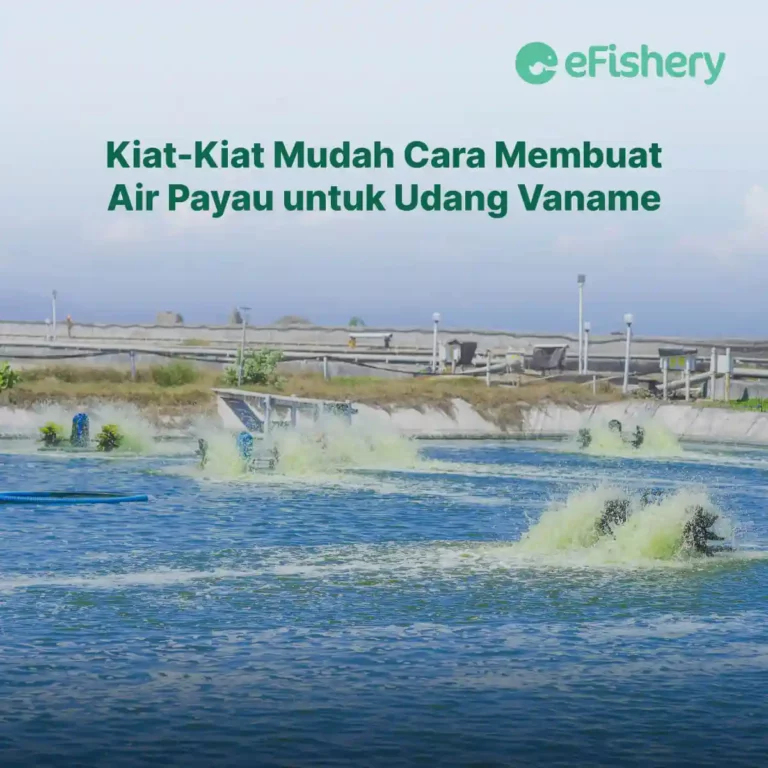Artikel Ini Telah Direview Oleh:

Syavin Pristiwayuning
Penulis Makalah Ilmiah Perikanan
How to make brackish water for vannamei shrimp is fairly easy and difficult. If you want to make a shrimp farming pond, but the location is far from the coast, then you need to make artificial brackish water with a suitable salinity for the growth and development of shrimp.
Generally, vannamei shrimp live in a salinity ranging from 15-25 ppt. The fluctuating salinity of vaname shrimp pond water can affect the concentration of salt levels in the pond. Pond waters that have a stable level of salinity can potentially optimize the survival of vannamei shrimp.
Curious how to make brackish water for shrimp? Read more in this article!
Characteristics of Water Needed by Vaname Shrimp
Pond water quality management is one of the determining factors for the success of aquaculture. Management of water quality in ponds is an effort to keep the condition of the waters in accordance with the quality standards of shrimp aquaculture ponds. The optimal range of water quality parameters for vannamei shrimp ponds is as follows:
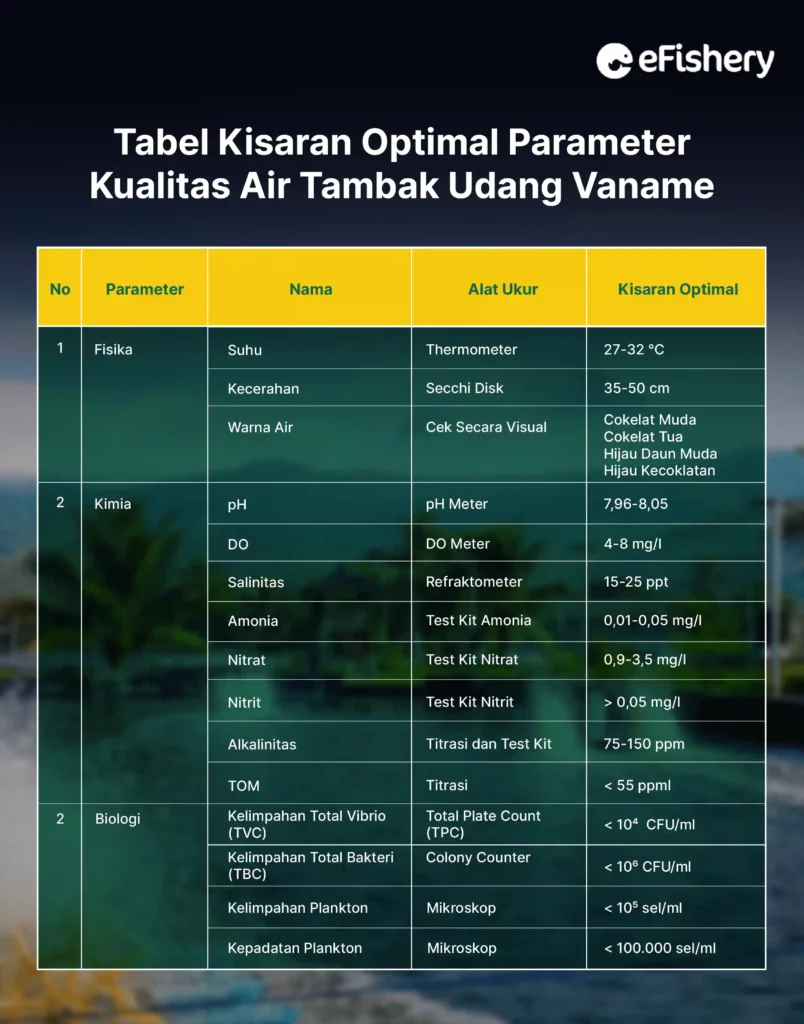
After you know the optimal range of pond water quality needed for vannamei shrimp, it will be easier for you to carry out cultivation. This is because good water quality will make shrimp more comfortable and can support more optimal growth.
One of the factors that affect water quality is salinity. In shrimp farming, there is a classification of waters based on salinity, including:
- Freshwater : < 0.5 ppt
- Brackish water:
- Oligohaline : 0.5 – 3.0 ppt
- mesohaline : 3.0 – 16.5 ppt
- Polyhaline : 16.5 – 30 ppt
- Saltwater:
- marine : 30 – 40 ppt
- Brine (hyperhaline) : > 40 ppt
The ideal salinity for shrimp pond water has a value of 10-35 ppt. However, the need for vannamei shrimp salinity ranges from 15-25 ppt. To avoid causing stress to the shrimp, Farmers are required to check the water salinity level regularly.
The effort made by vannamei shrimp to control the balance of water and ions in the body with its environment is called osmoregulation. If shrimp osmoregulation is disturbed, it will make shrimp growth tend to be slow. This is usually caused by the dynamics of water salinity that changes significantly.
Salinity is closely related to vannamei shrimp osmoregulation. If there is a sudden decrease in salinity with a large enough range, it can complicate the process of osmoregulation in the vaname shrimp body. Meanwhile, if the salinity increases beyond the optimal limit, the shrimp growth will slow down because more energy is absorbed for osmoregulation than for growth.
Water salinity that is too high can inhibit the process of changing the skin or molting shrimp. Shrimp growth is actually faster at low salinity, between 5-10 ppt but more sensitive to disease. Therefore, the optimal salinity range is 15-25 ppt for vannamei shrimp growth.
How to Make Brackish Water for Vaname Shrimp
In vannamei shrimp cultivation, water is the main component that is closely related to the enlargement of vannamei shrimp. You must always pay attention to the condition and quality of the water. Water quality parameters in shrimp farming consist of water temperature, water transparency, salinity, and pond water pH.
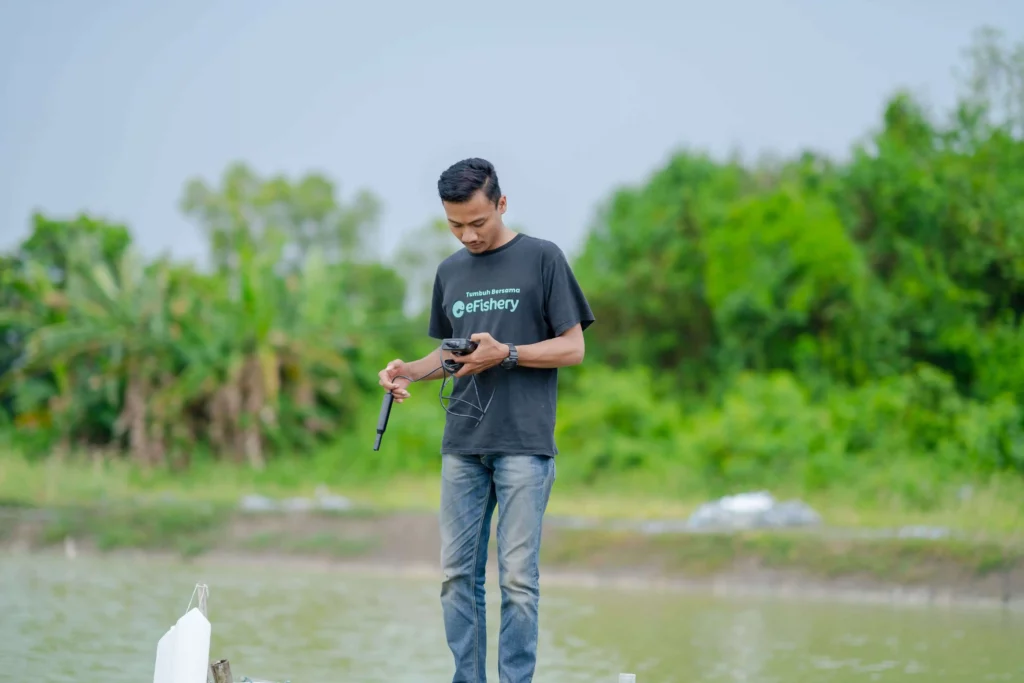
If you want to cultivate vannamei shrimp but the location is too far from the coast, you can make artificial brackish water using fresh water by increasing its salinity to make it suitable for shrimp growth and development. Here's how to make brackish water from fresh water for shrimp:
1. Material Preparation
In making brackish water for shrimp farming, you need to prepare tools and materials, such as a round pond with a diameter of 3 meters, an aerator machine, and krosok salt.
2. Water Filling
To make brackish water in the cultivation process, you need to fill the water in a round pool with a height of 90 to 100 cm. You can use river water or PDAM water that has settled overnight. Filling with water will affect the formation of flocs in shrimp farming using the biofloc technique.
3. Aerator Machine Installation
At the same time as filling water, you can install an aerator machine for aeration. You can include the aerator in the circular pool while the water filling process is being carried out. You can start the machine after the water is filled to the required height. If you use PDAM water, this aeration process can help remove chlorine and chlorine levels.
4. Mix Krosok Salt
When the water has reached a height of 90 to 100 cm, you can add approximately 46.12 kg of krosok salt. The aerator in the pond must remain on. After that, you need to wait approximately 1 to 2 hours after the krosok salt is added.
Krosok salt serves to increase the salinity (salt level in water) to the level of sea water. Then, you need to check the salinity using a measuring device refractometer. If the salt level in the pool water still shows a salinity below 15 ppt, then you need to add krosok salt.
Shrimp culture water needs to be replaced every 60 days. In order to maintain water quality, routine observations are required referring to SNI. This observation aims to determine the parameters of temperature, DO, salinity, pH, brightness, and water color.
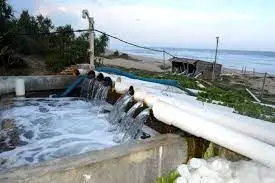
If your pond is located close to the shoreline, you can use sea water through a drilled well for vannamei shrimp farming.
Drilling wells are the process of digging the ground to get a source of water in the ground by drilling a deeper layer of groundwater, so that the water obtained is not contaminated with other water.
Water from drilled wells on the shoreline can be found at depths of 65-100 meters, depending on the distance of the drilled wells to the shoreline. The closer the drilled well is to the shore, the lower the depth of the well to get water. If you use drilled wells as a source of water, then you need to pay attention to water quality management, including:
- Fertilization and treatment Water
Cleanliness and level of sterilization need to be considered, this is to avoid the possibility of disease in shrimp. Before the water from the drilled well enters the holding tank, you are advised to carry out fertilization with a filter water to anticipate that dirt and silt are not carried away into the shrimp rearing ponds.
treatment Water is also used to sterilize harmful microorganisms and purify water for shrimp farming. Process treatments use 10 ppm chlorine, after that you need to aerate for 24 hours, and neutralize using 5 ppm thiosulfate. After the water is declared neutral, the water is ready to be used for vaname shrimp cultivation.
Another way is that you can use charcoal which is used as a filter to filter Fe, so that it does not enter the shrimp farming pond.
- Use of Venturi Aerators
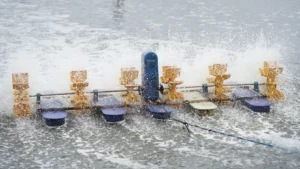
The venturi aerator functions to maintain oxygen in pond water. The need for oxygen in ponds increases along with the age of the shrimp being cultivated. The required dissolved oxygen level is > 4 mg/l for optimal shrimp growth.
- Use of Probiotics
Probiotics have the ability to support the growth and productivity of shrimp. Giving probiotics serves to improve water quality and balance microorganisms in the digestion of shrimp so that they have a high absorption rate. Probiotics containing bacteria lactobacillus And bacillus you can use it to support the productivity of vannamei shrimp, the dose used is 25 ml/m³ of water.
- Water Change
Water change is intended to maintain water quality stability to support growth and minimize shrimp mortality. Water exchange is useful for removing organic matter from metabolic waste and leftover feed. By changing the water regularly, it can help supply dissolved oxygen. This water change can be done once a week as much as 10-20% of the volume of pond water.
Know the Right Steps to Make Brackish Water in Cultivation Consultation at eFarm!
Need Help Regarding Shrimp Cultivation Business?
Fill in your personal data in the following form. Our team will immediately contact you via the number cellphone attached. Make sure the data entered is correct.
It should be noted that the need for vannamei shrimp salinity ranges from 15-25 ppt. Therefore, you need to check the water salinity regularly. If the water salinity of vannamei shrimp ponds fluctuates, it is certain that the shrimp will be stressed and result in mass death in your pond.
However, you don't need to worry. eFishery present to become a farming partner for Mr/Mrs Farmers through the shrimp farming application, eFarm!
eFarm is an application that can help farmers to solve shrimp farming problems with features Cultivation Consultation. Cultivation Consultation is one of the features in the app eFarm which you can use to consult on cultivation issues which will be answered directly by a professional aquaculture expert.
So what are you waiting for? immediately consult cultivation problems with features Cultivation Consultation only in eFarm

Syavin Pristiwayuning - Penulis Makalah Ilmiah Perikanan
Berpengalaman sebagai asisten koordinator pelatihan teknisi pada tahun 2020 dan saat ini aktif sebagai Technical Support Online di eFishery
Questions About How to Make Brackish Water for Shrimp
Of course, vannamei shrimp can live in brackish water. The ideal salinity for shrimp pond water has a value of 10-35 ppt. However, the need for vannamei shrimp salinity ranges from 15-25 ppt.
Ideally, the salinity for shrimp pond water has a value of 10-35 ppt. However, the need for vannamei shrimp salinity ranges from 15-25 ppt.
- Anas P, Sudino D, and Jubaedah I. 2015. Water Carrying Capacity for Semi-Intensive Vannamei Shrimp Cultivation in the Utilization of Coastal Areas in Pemalang Regency. Journal of Fisheries and Maritime Extension, 9(2): 29-46.
- Muhari S. 2019. Management of Water Quality in Intensive Growing of Vaname Shrimp (Litopenaeus vannamei) at PT. Agro Nusantara Halid Bulukumba. Thesis. Department of Aquaculture. 39 p.
- Rudiyanto, Haryasakti A, and Rosdianto. 2021. Feasibility Study of Bored Well Water in the East Kutai STIPER Area as a Cultivation Media Penaeus monodon on the Tarpaulin Pool. Integrated Agricultural Journal 9(2): 162-176.
- Supono. 2018. Water Quality Management for Shrimp Farming. Main Grace Award. 132 pp.
